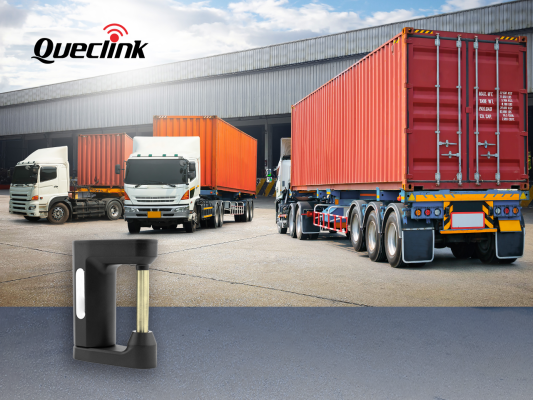Fleet managers face an inevitable amount of employment risk. Not only are they trusting fleet drivers to remain professional out of view, but they’re also entrusting them to become respectable brand representatives on the road. Drivers are also left alone with high-value stock and vehicles, meaning that even minor mishaps can lead to significant profit losses.

With fleet managers often also facing liability when it comes to things like accidents and travel mishaps, it becomes plain that protection is the only form of defence within this business model. And, there are few better protections than a clear fleet policy.
As well as ensuring that every driver works in accordance with clearly outlined procedural guidance, robust fleet policies can serve as a crucial legal crutch for fleet managers at every level. In this article, we’ll consider what exactly a fleet policy is, and what a robust policy should look like.
What is a Fleet Policy and Why Do You Need One?
Not to be confused with fleet policy insurance, the fleet policies that we’re referring to here are a form of governance document that should be shared with drivers both when they join your company and throughout any notable changes, such as the introduction of new technologies or EV vehicles.
As well as providing unequivocal proof of your company expectations, this document ensures that both parties, and any legal third parties, are always fully aware of where employer and employee responsibilities divide. For instance, a policy might state the legal hours a driver can operate. Any manager breaching that outline will become potentially liable for incidents caused by fatigue. Equally, a policy may outline requirements such as zero alcohol consumption during driving periods, meaning that the legal responsibility to contact drink-driving solicitors in the face of a charge of this nature will fall solely on the driver involved.
As well as these broad legal and operational purposes, a fleet policy may also serve to ensure –
- Operational alignment with overall company goals and intentions (e.g., net zero emissions, etc.)
- Compliance with relevant regulatory standards
- Monitor driver performance
- Formalise certain fleet procedures, such as vehicle allocations
What Should You Include in a Robust Fleet Policy?
Understanding roughly what a fleet policy stands to provide for your fleet management isn’t enough – you also need to understand what a robust fleet policy should look like. Luckily, there are some policy best practices that can help to perfect this governance essential, and they include –
# 1 – Setting Clear Driver Expectations
At a basic level, your fleet policy should set clear expectations for your drivers, including legal essentials such as their need to hold a valid UK licence for the vehicle in question, with no points or blemishes in their driving record.
But expectations don’t stop at this basic point. A reliable fleet policy should also clearly outline expectations that might include the need for reliable and regular fleet communication, to expected conduct regarding things like speed limits, drink driving, and more.
It’s especially important to outline driver responsibility and liability in this section, as this will make a huge difference to your legal standing should an accident occur. If you’ve made sure that drivers are aware of what they should and shouldn’t do on the road, then it’s their responsibility to adhere at all times.
# 2 – Getting Specific About Vehicle Use
All fleet managers have different vehicle use rules, meaning that you’ll need to outline your specific outlook in a clear, easily accessible document. In this section, you’ll especially want to highlight usage requirements such as how, when, and to what extent drivers have access to company EV/fuel cards. Equally, this is a prime time to outline the sometimes contested topic of personal use, and how much of that falls within company jurisdictions.
It’s also essential to make clear any responsibilities that fall to your drivers, such as the need to clean and maintain a vehicle where relevant. Meanwhile, you should be specific about what drivers can’t do with company vehicles, such as driving abroad or off-road.
# 3 – Mastering Matters of Maintenance
Along roughly the same lines, it’s crucial to dedicate a section of your policy to matters of maintenance. Namely, as mentioned above, you’ll want to be explicit about which maintenance matters your fleet drivers are responsible for (e.g., general cleaning and engine oversight), compared with what you take on as an employer (e.g., MOTs and repairs).
To avoid any confusion and to ensure that vehicles are present when required for maintenance priorities, it’s also worth including a general maintenance schedule. This should clearly outline the dates on which drivers should conduct their own checks, along with information about what those checks should be, as well as a record of expected official checks that require the vehicle to be in the garage.
# 4 – Putting Policies in Place
A fleet policy is also a great place to outline your broader company policies for all eventualities on the road. Most obviously, this section should concern things like insurance details and coverage, but that’s not all you need to include here.
It’s also essential to outline general policies in terms of things like accident procedures, which state what drivers should do immediately after an accident. Equally, you’ll want to include clear breakdown policies, which let drivers know who to contact and what to do with stock or other priorities in this eventuality.
Conclusion
Most fleet managers will have some kind of policy in place for their drivers, but surprisingly few manage to handle this priority with the level of detail or ongoing attention required for true success. To overcome that, it’s vital to both implement the best practices we’ve discussed here and make sure that policies are stored within easy reach across your vehicles. It’s also vital to note that, to be truly robust, a fleet policy should be constantly changing, with updates and new sections added for every new technology, company priority, or general change your team undergoes.

 Pexels Image: CC0 Licence
Pexels Image: CC0 Licence Pexels Image: CC0 Licence
Pexels Image: CC0 Licence

